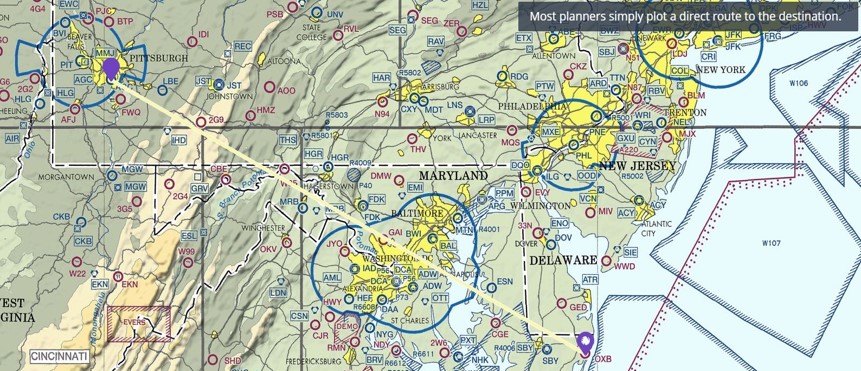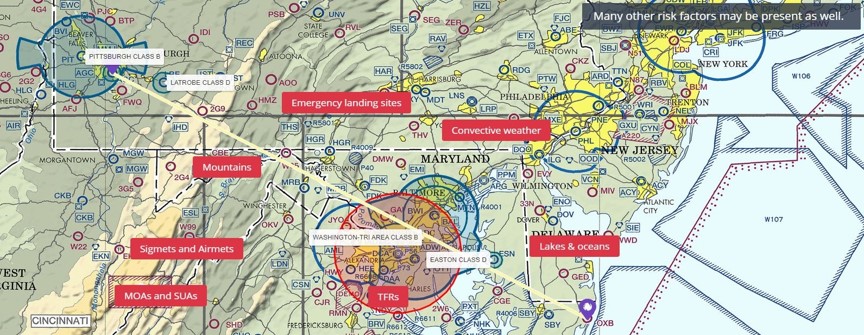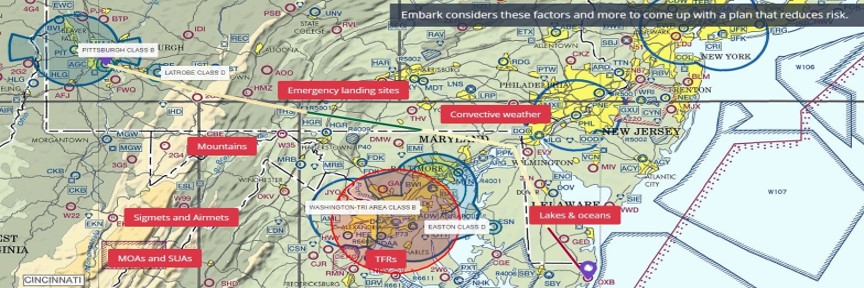Mitigating Risks in Aviation with Help from Risk Assessment Tools~Guest Blogger Jon Little CFII/MEI
All transportation methods involve managing some level of risk. Many people do not consciously realize that during normal activities they are continuously making many risk assessments and mitigations, whether it is while riding a bicycle, taking a jog, or driving a car. Your brain is analyzing the situations and then you are taking the appropriate action, ranging from:
- Putting on your helmet before you get on your bicycle (lowers your risk for head injury).
- Putting on your reflective vest before you jog (makes you more visible to cars).
- Looking both ways before you pull through an intersection (avoiding a collision with another car).
 Risks in aviation are much greater and pilots must realize that there are risks involved with every flight. The FAA focuses on Risk Management as one of its top safety issues. The FAA wants the aviation community to always work towards a culture of safety in the aviation industry from student pilots to airline captains. Risks in aviation are much greater and pilots must realize that there are risks involved with every flight. The FAA focuses on Risk Management as one of its top safety issues. The FAA wants the aviation community to always work towards a culture of safety in the aviation industry from student pilots to airline captains.
The FAA has a basic three-step process for Risk Management:
- Hazard Identification: What conditions or circumstances could negatively affect your flight?
- Risk Assessment: How likely are the identified hazards to cause a problem and how severe will the consequences be if they do?
- Risk Mitigation: What can you do to reduce acceptable risk levels?
Let’s review some of the tools that pilots utilize to manage flight risks. We could take a deep dive to discuss the broad range of risks that pilots need to manage but that would take an entire book. So, in this blog, we are going to focus specifically on the subject of flight planning.
When you mention flight planning, some pilots think of cross-country flight when in reality, flight planning should be completed prior to every flight. This is true, regardless of whether it is a flight in a pattern, to the local practice area, or across the country.
There are many excellent sources for flight planning information. You could call 1-800-WX-BRIEF, and talk to a person, or go to websites such as www.1800wxbrief.com, or www.aviationweather.gov. These sources all offer pertinent information that a pilot can use in the preflight planning process to assess and mitigate risk.
After the pilot receives a preflight planning briefing the pilot must then digest a large amount of information including:
- Surface winds
- Surface temperatures and dewpoints
- Barometric pressure
- Ceilings
- Visibilities
- Winds and Temperatures aloft
- AIRMETs
- SIGMETs
- NOTAMs
- Active SUA
- TFRs
This amount of information can start to overwhelm a pilot’s preflight planning process. So instead of using this information to properly mitigate risk, the pilot may inadvertently leave out a significant item from the brief such as an AIRMET Zulu for icing, a Presidential TFR, or a Convective SIGMET while conducting the preflight planning process. A single missed risk could result in terrible consequences.
 There are many ways to augment risk management with the use of new technology. One option is a free web-based flight planning application called Embark (https://embarkflight.com). Embark helps the pilot plan routes with hazard identification, risk assessment, and risk mitigation, including the following factors that most flight planners don’t consider. There are many ways to augment risk management with the use of new technology. One option is a free web-based flight planning application called Embark (https://embarkflight.com). Embark helps the pilot plan routes with hazard identification, risk assessment, and risk mitigation, including the following factors that most flight planners don’t consider.
- Adverse Weather
- Icing
- Convection
- Low visibility
- Turbulence
- Airspace
- TFRs
- Class B, C and D
- SUAs (MOAs, Restricted Areas, Prohibited Airspace)
- Flight over large bodies of water
- Flights over mountainous terrain
- Routing to avoid current and future radar returns
- Fuel consumption visualized along your route of flight



The first step of risk management is hazard identification because you can’t mitigate what you don’t know about. Tools to help identify, assess, and mitigate risk can save planning time, fuel money, and most importantly, pilot’s lives.
 Jon Little, CFII/MEI/ATP Jon Little, CFII/MEI/ATP
Pilot
Near Earth Autonomy

Blogs are intended for educational purposes only and do not replace independent, professional judgment. Statements of fact and opinions expressed are those of the author individually and, unless expressly stated to the contrary, are not the opinions or position of the National Association of Flight Instructors. NAFI does not endorse or approve, and assumes no responsibility for, the content, accuracy or completeness of the information presented. Readers should note content may appear in various media, including print, email, enews without further notice.
|
 Risks in aviation are much greater and pilots must realize that there are risks involved with every flight. The FAA focuses on Risk Management as one of its top safety issues. The FAA wants the aviation community to always work towards a culture of safety in the aviation industry from student pilots to airline captains.
Risks in aviation are much greater and pilots must realize that there are risks involved with every flight. The FAA focuses on Risk Management as one of its top safety issues. The FAA wants the aviation community to always work towards a culture of safety in the aviation industry from student pilots to airline captains. 
 There are many ways to augment risk management with the use of new technology. One option is a free web-based flight planning application called Embark (
There are many ways to augment risk management with the use of new technology. One option is a free web-based flight planning application called Embark (


 Jon Little, CFII/MEI/ATP
Jon Little, CFII/MEI/ATP




